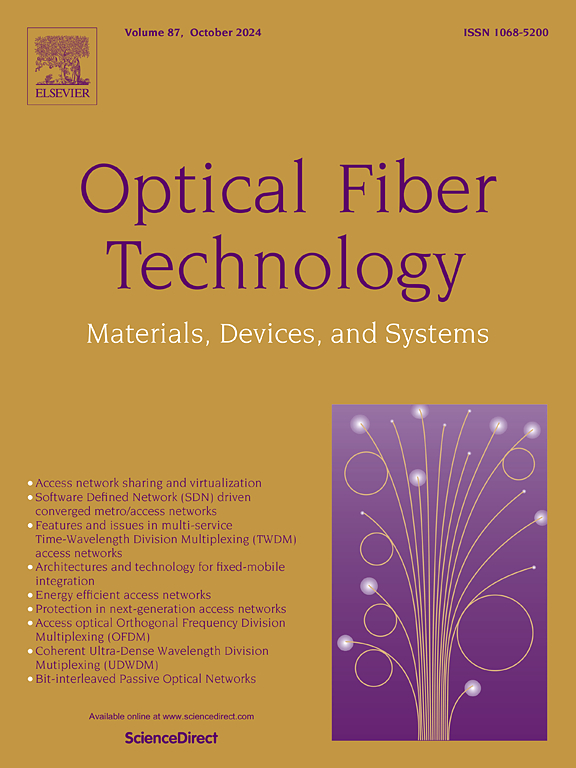Elimination of temperature cross-sensitivity in torsion and curvature measurements based on arc-induced long period fiber gratings
IF 2.6
3区 计算机科学
Q2 ENGINEERING, ELECTRICAL & ELECTRONIC
引用次数: 0
Abstract
We demonstrate a long period fiber grating (LPFG) with two prominent resonant dips for eliminating the temperature cross-sensitivity in torsion and curvature measurements. The versatile LPFG is fabricated on a conventional single mode fiber (SMF) using the arc discharge method. Due to the resonant coupling between the core mode and antisymmetric cladding modes, the transmission spectrum shows the polarization dependence, which is proved to be useful in improving the sensing performances. The different torsion sensitivities and similar temperature sensitivities for the resonant wavelengths of both dips indicate that the LPFG has the ability of temperature-independent torsion sensing. By optimizing the state of polarization (SOP), a torsion sensitivity of 0.104 nm/(rad/m) can be achieved with the discrimination of twist direction. Notably, the influence of temperature on the resonant contrast for the dip with a higher contrast can be negligible. Thus, its contrast variation is merely determined by curvature, meaning that the LPFG is intrinsically suitable for temperature-independent curvature sensing. The curvature sensitivity can be up to about 55 dB/m−1 by adjusting the SOP. The demonstrations show that our fabricated LPFG can realize the elimination of cross-sensitivity induced by temperature in both torsion and curvature measurements. Additionally, the SMF-based LPFG has the advantages of low fabrication difficulty and cost, providing a simple and economic way for temperature-independent sensing.
求助全文
约1分钟内获得全文
求助全文
来源期刊

Optical Fiber Technology
工程技术-电信学
CiteScore
4.80
自引率
11.10%
发文量
327
审稿时长
63 days
期刊介绍:
Innovations in optical fiber technology are revolutionizing world communications. Newly developed fiber amplifiers allow for direct transmission of high-speed signals over transcontinental distances without the need for electronic regeneration. Optical fibers find new applications in data processing. The impact of fiber materials, devices, and systems on communications in the coming decades will create an abundance of primary literature and the need for up-to-date reviews.
Optical Fiber Technology: Materials, Devices, and Systems is a new cutting-edge journal designed to fill a need in this rapidly evolving field for speedy publication of regular length papers. Both theoretical and experimental papers on fiber materials, devices, and system performance evaluation and measurements are eligible, with emphasis on practical applications.
 求助内容:
求助内容: 应助结果提醒方式:
应助结果提醒方式:


